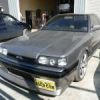Wtb: Jun Fj20 Plenum
Announcements
-
Similar Content
-
Latest Posts
-
Hopefully it ends up being something manageable, like a hone, rather than a full bore—it would be a huge relief if it’s not as bad as it looks. Hang in there; these setbacks are annoying, but it sounds like you’re handling it as smartly as possible.
-
At the end of the day, it’s all about understanding the odds and being comfortable with the potential cost, whether it’s horsepower on a build or chips on a roulette table. And I have to say, the Laine example made me laugh—some people really do embrace that carefree, “roll and see” attitude!
-
Thanks MBS206, i got that PDF but got abit overhelm with all the connections and tracing of wires. I wasn't expecting to plug the dash harness anywhere. i was just going to use my electronics jumper wires to plug into the right pins like ECU power, ecu ground, ignition trigger etc... I do have a few ratchet straps locking it down tight. Fire extinguisher ready and only a small amount of fuel at a time, enough to submerge the pump.
-
Thanks GTSBoy, i will do abit more digging. I am missing a blue relay near the ECU connector... so i will chase that up in the next few days as well
-
https://yariksteel.ru/manual/R33/Skyline_R33_elektroprovodka.pdf Page 18 should be what you want for the Dash Cluster wiring. Though, you don't need the dash plugged in to get the motor running. What you want is power as how GTSBoy said. You need to power the ECU. Find in the above link the ECU pin outs (Verify them before just connecting them up from things written on the internet). Find anything needing power, give it power, find anything needing ground, give it ground. Then give the starter motor power through a big cable, and bridge the solenoid on the starter straight to power too. ECU will be on, and when you give the starter power, it'll spin the starter motor, and it should start. I also hope you have a proper stand, and not just the engine sitting on some wood. You will want it bolted down properly.
-







Recommended Posts
Create an account or sign in to comment
You need to be a member in order to leave a comment
Create an account
Sign up for a new account in our community. It's easy!
Register a new accountSign in
Already have an account? Sign in here.
Sign In Now